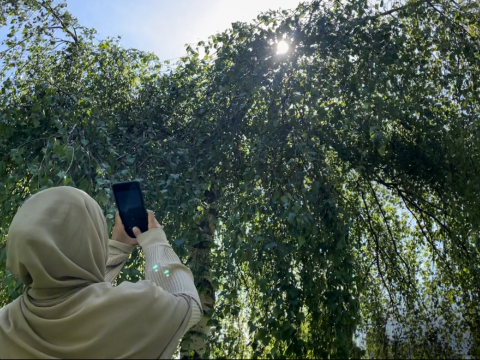How to identify trees in winter
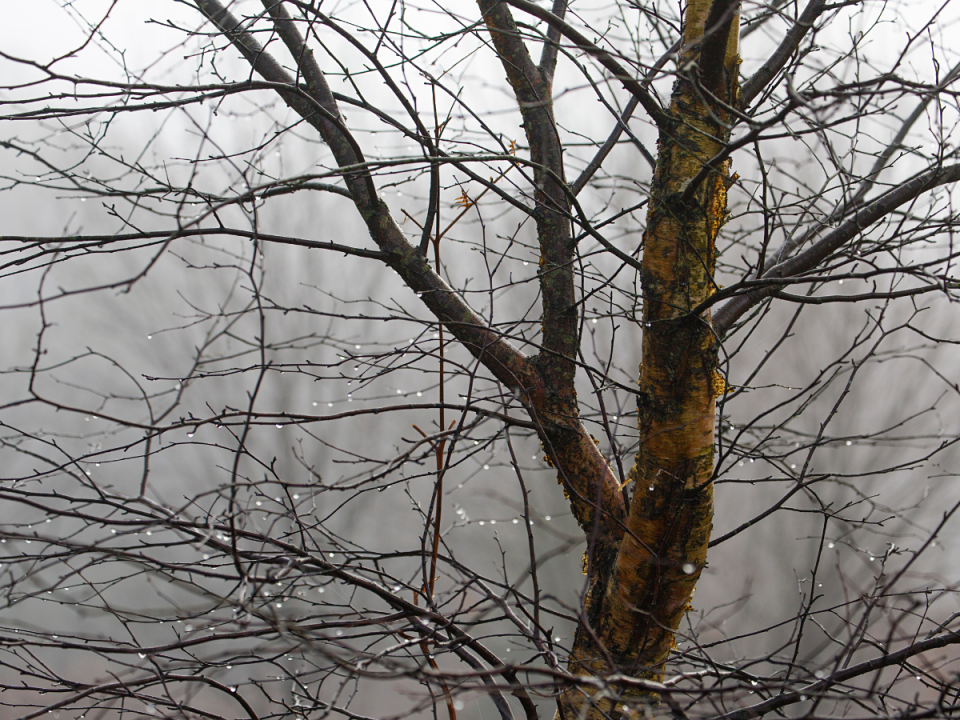
When the leaves have fallen and trees are looking bare, it might seem like tree identification is an activity best left for warmer months. However, winter offers a unique opportunity to observe trees in a new light, appreciating their bare silhouettes, and the benefits they’re providing even in dormancy.
Why Identify Trees in Winter?
While summer’s lush green canopies make tree identification relatively easier, winter ID invites you to get up close and personal by learning to recognise trees by their buds and bark.
And we all need an excuse to get out in nature during these darker months. Seasonal affective disorder affects more than 2 million people in the UK, and most people will admit to feeling a bit gloomier in winter.
So, bookmark this page, and let’s go for a winter nature walk!
Key Winter Tree Features to Observe
Without leaves, trees reveal a variety of distinctive features that can aid in identification. Here are some of the most important:
1. Buds and twigs
Winter buds, which contain next season’s leaves and flowers, differ greatly in shape, size, colour, and arrangement. Examining these features can help pinpoint species:
- Ash (Fraxinus excelsior): Black, velvety buds that grow in opposite pairs.
- Beech (Fagus sylvatica): Long, pointed, reddish-brown buds arranged alternately on slender twigs.
- Horse Chestnut (Aesculus hippocastanum): Large, sticky, reddish-brown buds with visible scales.
Pay attention to twigs as well—some are hairy, others smooth, some have spines, while others feature lenticels (small breathing pores).
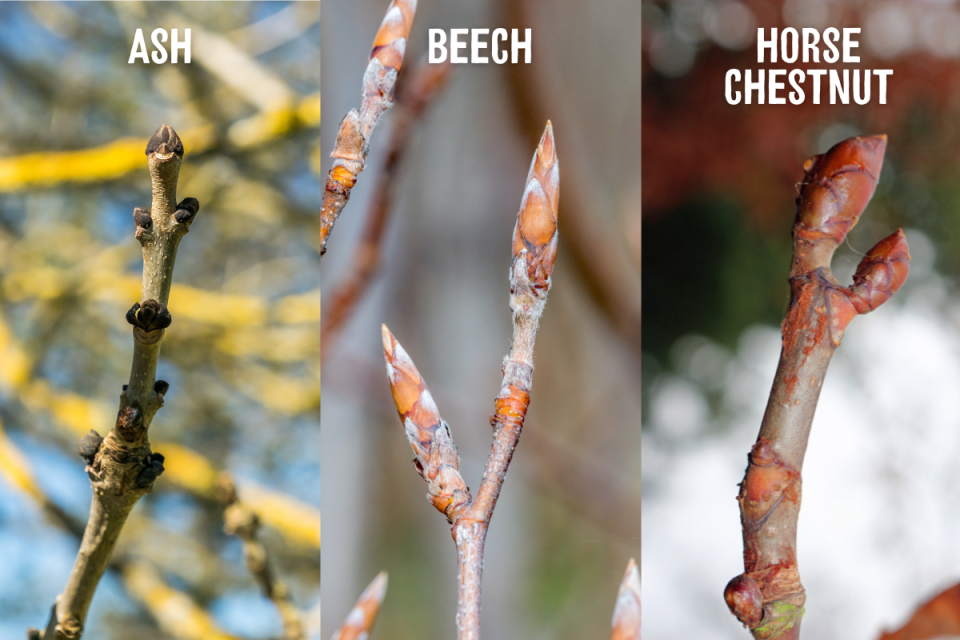
2. Bark Texture and Colour
The bark of a tree is like a fingerprint—no two species are exactly alike. With leaves absent, bark becomes one of the most reliable identification tools.
- Silver birch (Betula pendula): Smooth, silvery-white bark with dark horizontal lines and peeling layers. Sometimes they look like they have eyes where lower branches have come off and left dark lines.
- English oak (Quercus robur): Deeply ridged, rough bark that darkens with age.
- London plane (Platanus x hispanica): olive green to grey, with large scaly plates that peel off with light bark underneath, looking a little bit like camouflage!
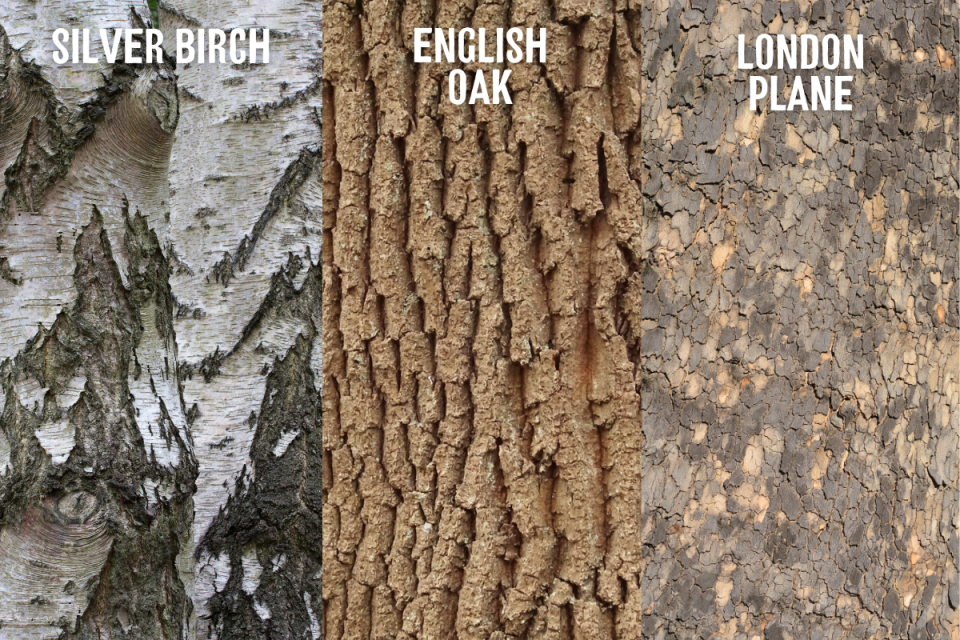
3. Fruits, Seeds, and Flowers
Even in winter, some trees retain remnants of their fruits, seeds, or flowers:
- Ash (Fraxinus excelsior): Clusters of winged seeds (samaras), often referred to as ‘keys.’
- Hazel (Corylus avellana): Male catkins (yellow and elongated) visible from late winter.
- Blackthorn (Prunus spinosa): Small, dark blue sloes that persist into the colder months.
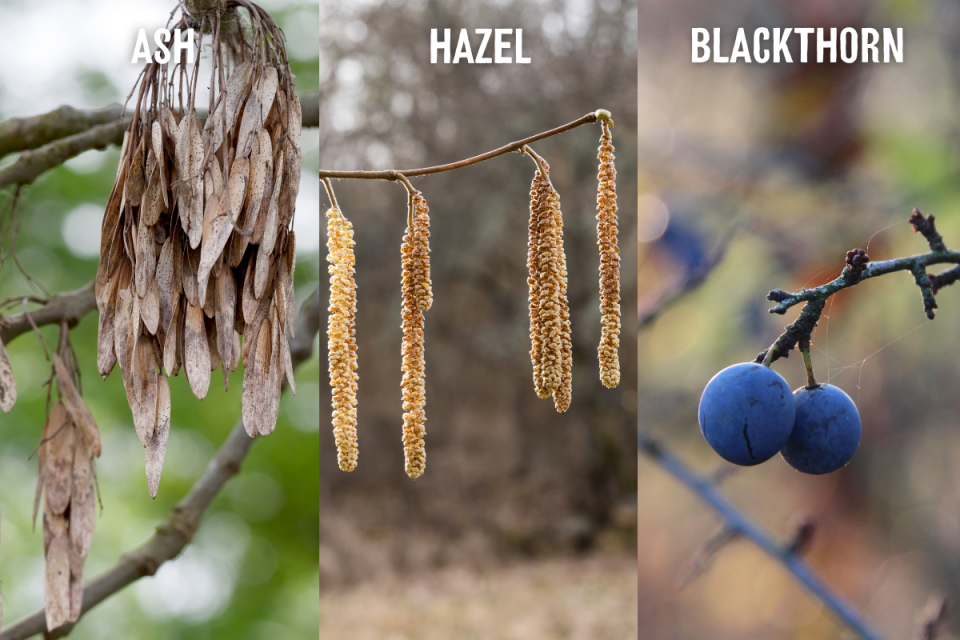
4. Tree Shape and Silhouette
Once you’ve got up close and personal, observing a tree’s overall form at a distance can be an effective method of identification:
- English oak (Quercus robur): Broad, spreading branches creating a sturdy silhouette.
- Downy birch (Betula pubescens): A more upright, slender shape with finer branches.
- Lime (Tilia spp.): Tall with a domed canopy and heart-shaped branching pattern.
The Importance of Urban Trees in Winter
Beyond identification, winter is an important time to appreciate the role trees play in urban environments. Trees help regulate temperatures, improve air quality, and provide crucial habitat for wildlife even in the colder months. Birds rely on tree branches for shelter, fungi thrive on decaying wood, and insects hide within bark crevices, ensuring ecosystems remain active year-round.
Winter might strip trees of their leaves, but it also unveils their intricate details, allowing us to appreciate them in a whole new way. So bundle up, step outside, and get to know trees in winter!
Urban Tree Watch 2025
Take part in the Urban Tree Watch 2025 and put your new-found skills to the test! Choose a tree local to you and document it throughout the seasons.
Take partTrees for Climate Action
This guide was brought to you by the Field Studies Council as part of the Trees for Climate Action project. This project is being led by Trees for Cities and is possible thanks to funding from the National Lottery Community Fund.
Donate to Trees for Cities and together we can help cities grow into greener, cleaner and healthier places for people to live and work worldwide.
Donate